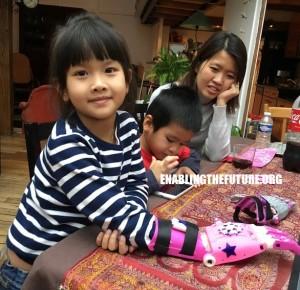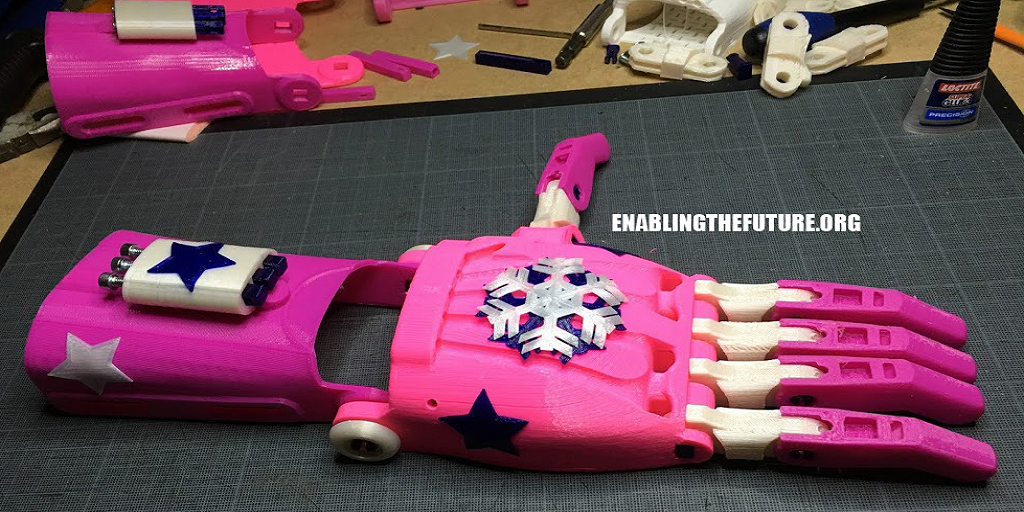
Mitsuko’s mother needed to travel to Paris for a minor surgery, so father Etienne brought Mitsuko along, hoping to find someone who could provide his daughter with an affordable, effective prosthetic device. He didn’t have much luck. Every prosthetic he could find cost thousands of euros and would have taken months to build. As Mitsuko and her family had to fly back to New Caledonia, which is over 10,000 miles away from Paris, this wasn’t an option. Furthermore, the only devices available would have impeded Mitsuko’s wrist movement.
Etienne had originally contacted medical device manufacturer Proteor. Although they were unable to provide anything in the short window of time required, the company’s manager referred the family to Thierry Oquidam, an acquaintance who volunteers with and helps to run e-NABLE France. Oquidam had previously offered to help Proteor to set up their own 3D printer, and he was now happy to take over Mitsuko’s case, with help from fellow volunteer Ghislain Gauthier.
Oquidam and Gauthier met with Mitsuko on December 31, at which point they took measurements and photos of her hand. By January 6, they had a prototype ready for a fitting. It needed some modifications, so they created another prototype, which they gave to Mitsuko on January 11, before her appointment with an occupational therapist.
“The occupational therapist was very happy with our 3D printed devices,” said Oquidam. “Mitsuko will continue to use the first hand for a few weeks or even months because it is tighter and easier for her to move. Then she will switch to the larger hand when her wrist is stronger and can manipulate it much more easily!”
After being told that a prosthetic would take months to create, Mitsuko received a new hand in less than two weeks after meeting the e-NABLE volunteers. In addition to being inexpensive and well-functioning, it’s also pretty cool-looking – pink with stars and snowflakes that Mitsuko can proudly show off. We’ve written a lot about e-NABLE, but the work they do for people still continues to amaze me. Discuss your thoughts on Mitsukeo’s new hand in the e-NABLE France Provides 3D Printed Prosthetic forum over at 3DPB.com.
